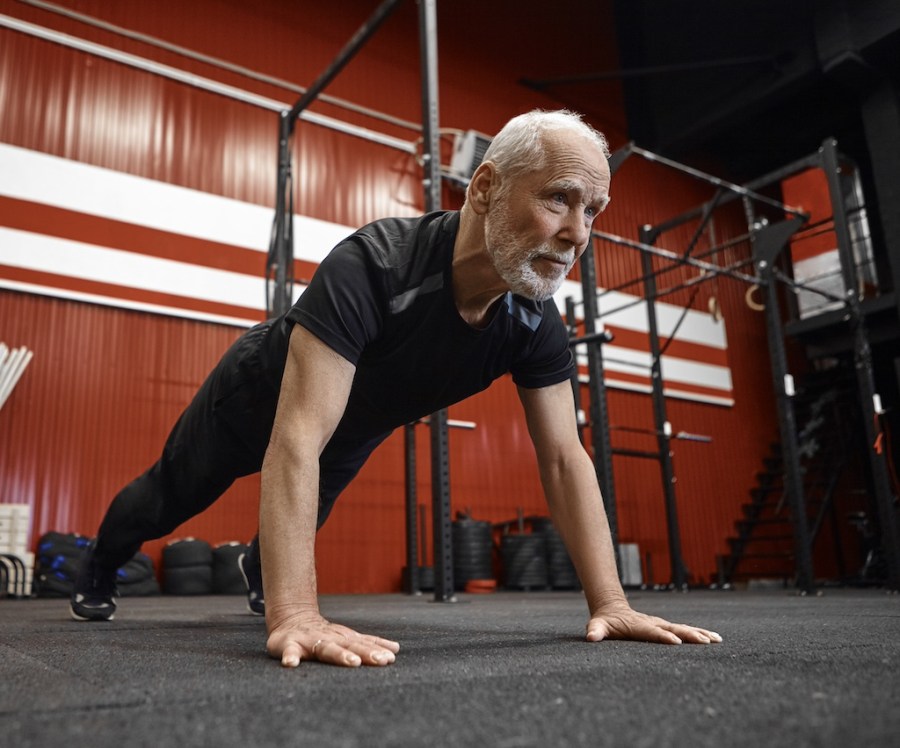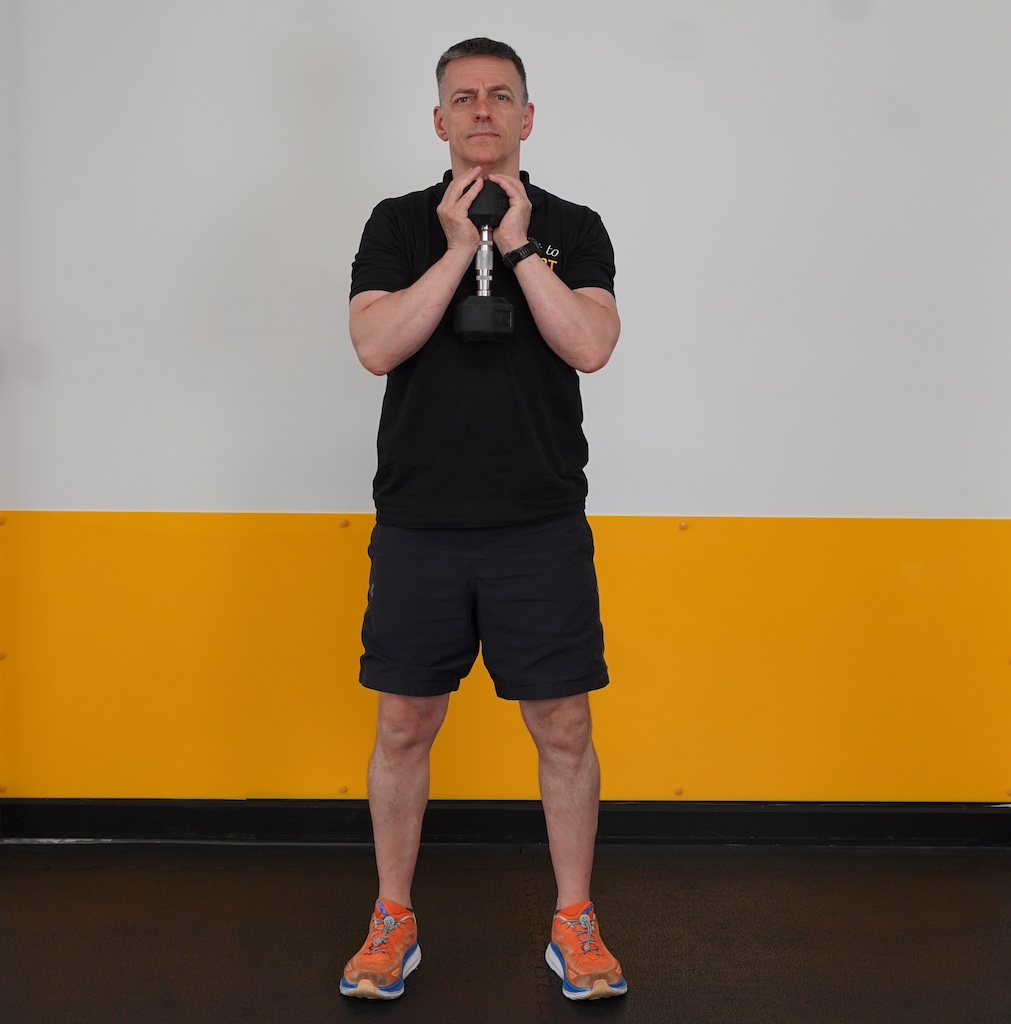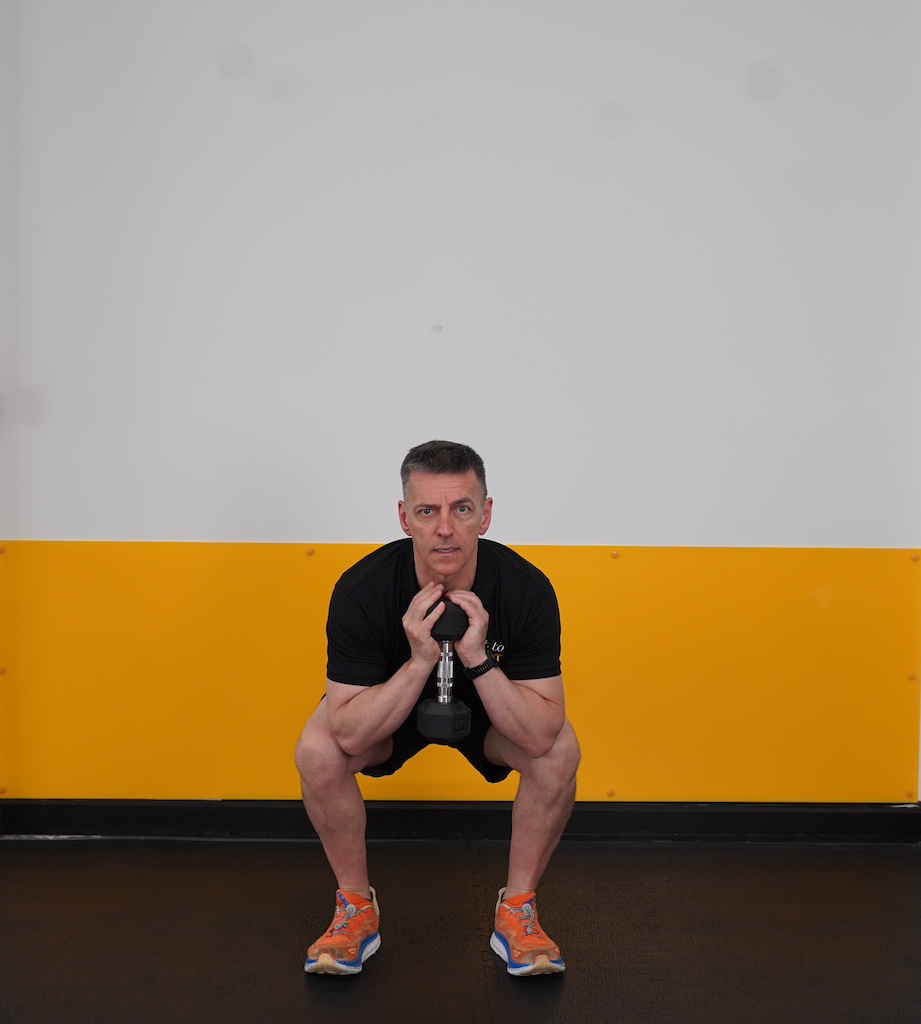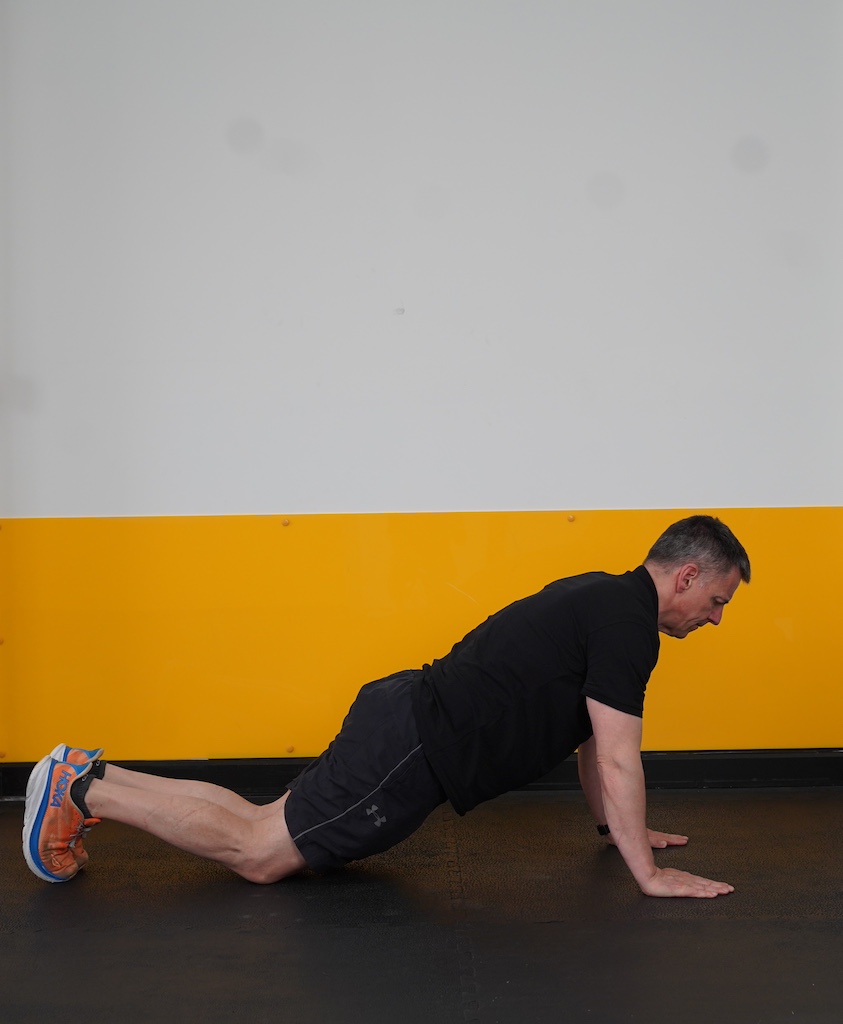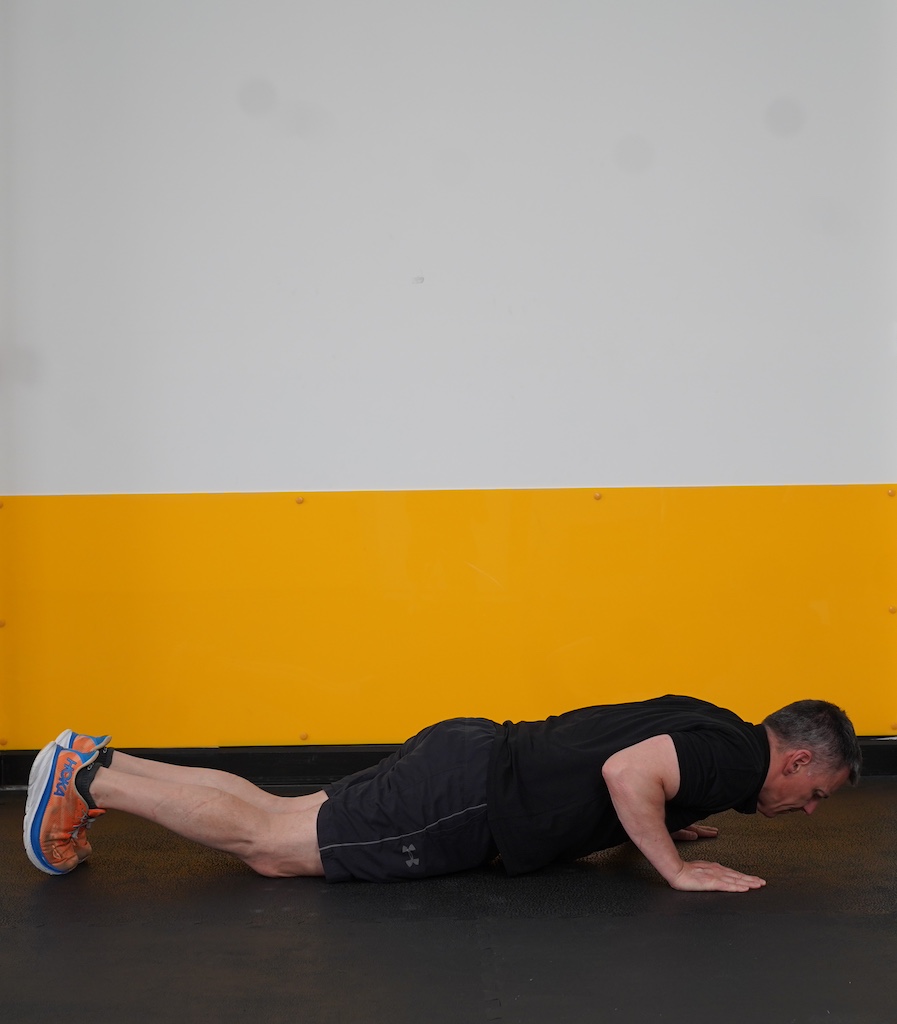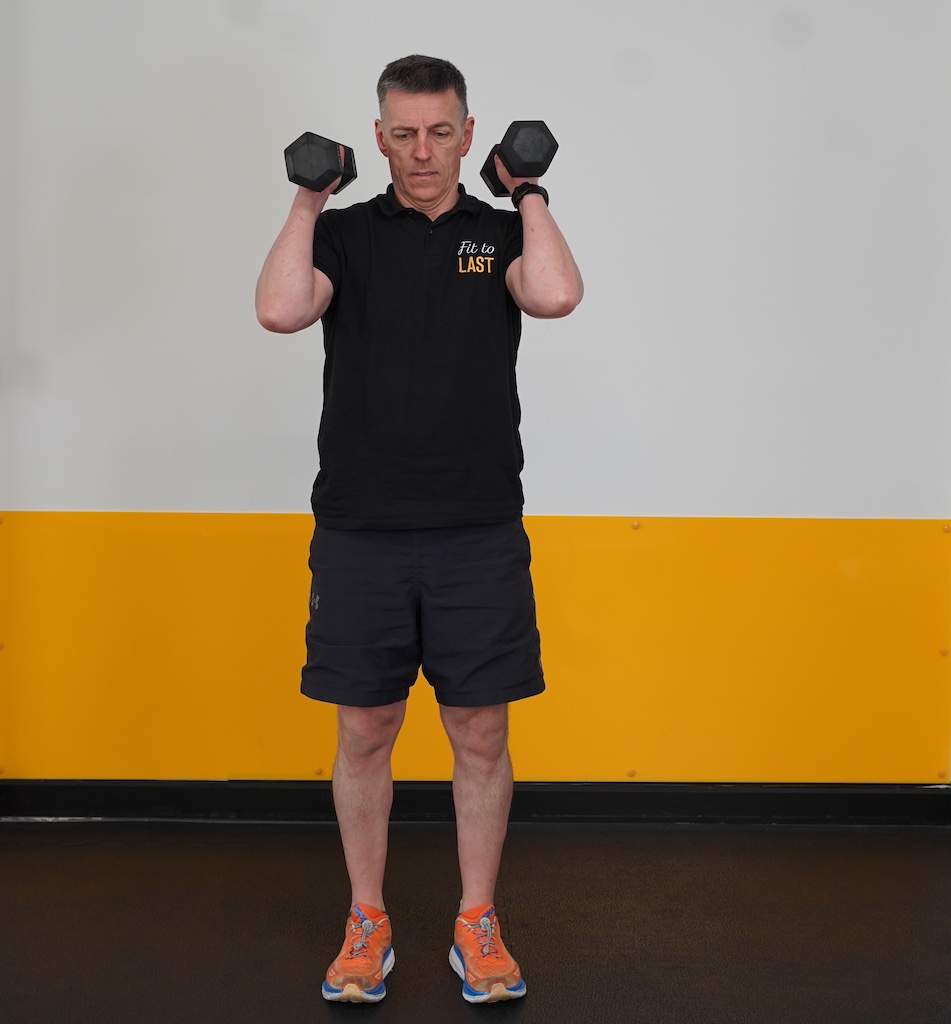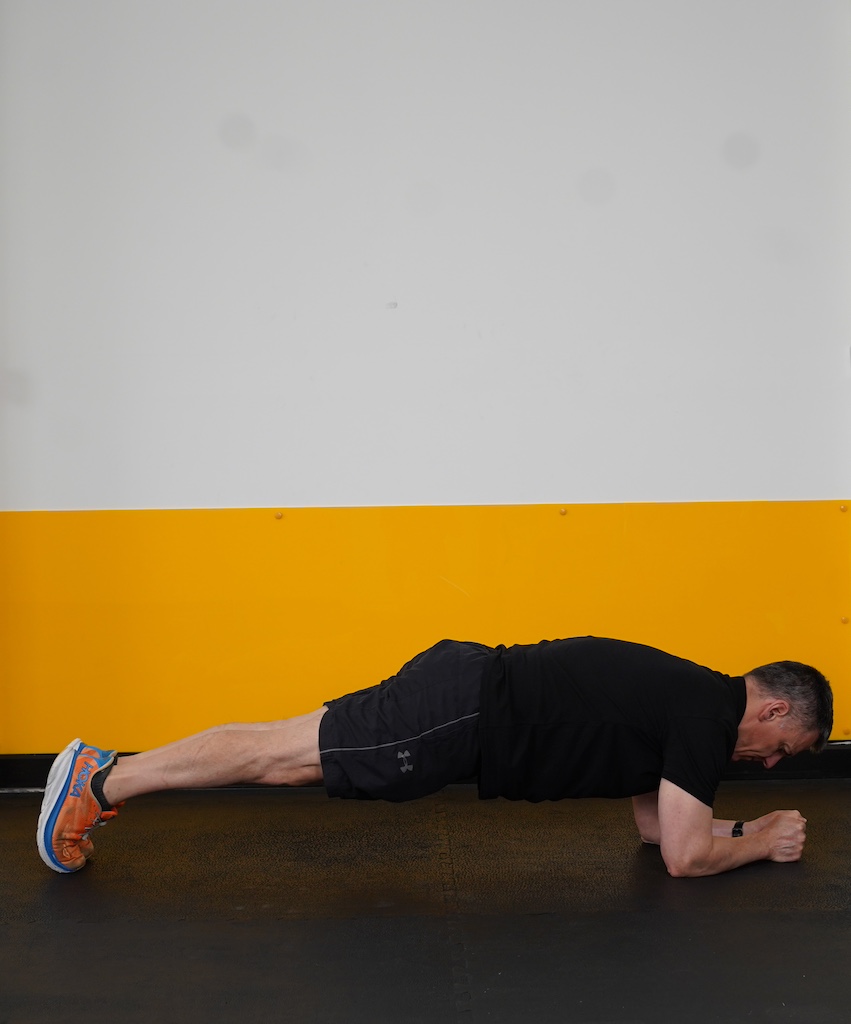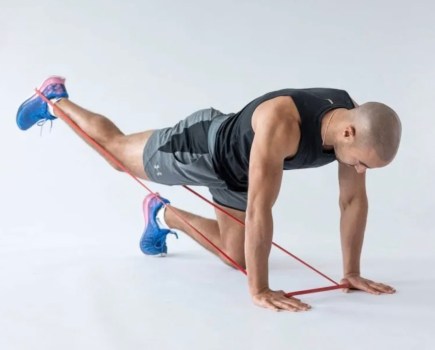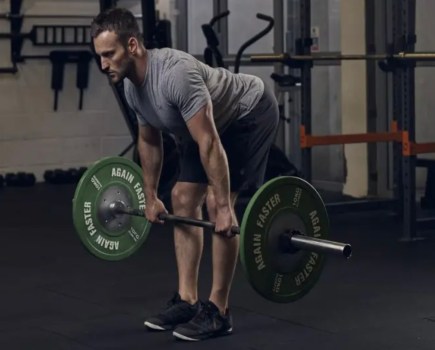James Staring, founder and lead fitness coach at Fit to Last Personal Trainers, explains how to strength train in your sixties and beyond – including a sample workout…
If you want to remain healthy and vibrant in your sixties, strength training – and the best bodyweight exercises – needs to be part of your lifestyle. There’s a common misconception that strength training means you’ll become big and muscled up, but that couldn’t be farther from the truth. In this article you’ll learn why strength training is essential in your sixties and beyond, as well as some exercises to get you started.
To clarify from the outset, what we’re talking about is progressive strength training. That simply means when a weight becomes too easy, you lift heavier. This concept is important, because failing to progress as you lift weights negates the benefits of it.
Why you should strength train in your sixties and beyond
To improve bone health
Perhaps the most significant benefit of strength training in your sixties is improved bone health. As you age, your body produces less hormones. This decreases your body’s ability to regenerate bone tissue, which is why your risk of osteoporosis increases as you age.
Strength training can delay this process by encouraging bone regeneration. When you lift weights, you use multiple joints to complete the movements. When you use multiple joints, the bones between the joints bend in response to the stress applied by the weight-lifting action. The bone’s response to the stress is to adapt to the stress applied, which means the bone will become stronger as you consistently apply stress to it.
This is why full-body strength training is encouraged as you get older.
To improve skeletal muscle and decrease fall risk
As you age, one of the unfortunate side effects is skeletal muscle loss (sarcopenia). As your skeleton is supported by muscle tissue, addressing sarcopenia is crucial for long-term health. According to Jeremy Walston in Current Opinion of Rheumatology, sarcopenia can start in your forties, and can progress in a linear fashion to the point where you’ve lost 60% of your skeletal muscle in your eighties.
You need to preserve skeletal muscle for a variety of reasons, including weight management and posture. But skeletal muscle is also important for helping you stay stable on your feet as you get older. If skeletal muscle loss isn’t addressed, as you age you’ll run a greater risk of falling, which can lead to catastrophic consequences.
Strength training is an essential activity to help you preserve skeletal muscle. Through full-body, progressive strength training, your body will adapt to the progressive demands you place upon it. This adaptation leads to a more stable physical foundation, as the muscles used to complete these activities must become stronger.
Think of regular exercise as ‘future-proofing’ your body. With progressive strength training you’ll stand up straighter and taller, and you’ll be more stable on your feet.
Health considerations before you begin strength training
For optimal results from strength training, your eating habits and recovery must be aligned.
Eating and recovery
A common misconception is that the changes you want to make occur while strength training. In fact, strength training is a stimulus that can lead to change when you eat the right foods and get the right amount of rest after your workouts. The recovery process helps you rebuild and adapt, so when you complete your next strength training workout, you’ll be a little bit stronger and able to do a little bit more.
For optimal results, follow these four steps to eat and recover fully between workouts:
- Consume protein with every meal.
Protein helps you build lean muscle tissue, so make sure all your meals (both before and after your workouts) have ample quantities of protein. A simple guideline is two palm-sized portions for men. - Listen to your body.
Sometimes you wake up and you can’t wait to work out. Other days, you wake up and think ‘nah, I don’t feel like it’. There’s nothing wrong with taking a day off from training if you feel tired. In fact, you’ll come back stronger if you allow yourself to recover. - Eat lots of colourful fruit and vegetables.
Consuming lots of protein is great, but you want to make sure your body can absorb the healthy goodness you’re consuming. A wide variety of mixed fruits and vegetables enables your body to absorb nutrients more effectively. Start with protein plus two colours on each plate of food and build from there. - Prioritise consistent, restorative sleep.
Sleep is often taken for granted, but quality sleep is the best way to get the most out of progressive strength training. When you sleep well, your body will build new muscle tissue and repair itself, so make sleep an important priority. Your body will thank you for it.
How to strength train in your sixties
Follow these principles to get the most out of strength training.
1. There’s no such thing as ‘old peoples’ exercise’
The most important point to remember with strength training is that movement is movement. Correct movement patterns apply to all ages.
A focus on basic movement patterns will help you become stronger in everyday life, not just in the gym. For these exercises we’ll be using dumbbells and bodyweight. They’re a little bit easier on the joints, and very effective for building strength.
2. Choose weights that challenge you
Choose weights that still enable completing the exercise but challenge you. If you don’t challenge your body, it won’t change. So, choose weights that make you work hard.
3. Learn how to be ‘comfortable with being uncomfortable’
You are doing something different that will challenge your body. It can make you feel uncomfortable, and that is a good state to be in. When you’re uncomfortable, you’re promoting change, and that’s a good thing.
If it gets too much, put the weights down. Remember the benefits of strength training, then try again.
4. Don’t forget to breathe
When we do things that are uncomfortable, sometimes we hold our breath or breathe in a shallow manner, into the top of our lungs.
Deep breathing during exercise helps us to relax as well as channel energy when the exercise gets difficult. So, practise exhaling fully when you exert (i.e. when you push or pull the weight), and inhale deeply when you recover (i.e. when you move the weight back to the starting position to perform another repetition).
Try this strength workout for seniors
The following exercises will provide you with a full-body strength training workout.
- Complete 3 sets of 10 repetitions.
- Choose weights where you can complete 10 reps with correct form, but still have the ability to complete 1-2 additional repetitions.
- Aim to increase the weights every 1-2 weeks.
1. Squat with dumbbell
Muscles worked: glutes (bum), quadriceps (front of your legs), hamstrings (back of your legs)
- Start with your feet shoulder-width apart, with your toes slightly pointed outward. Hold the dumbbell under your chin, with your elbows pressed against your ribs to keep your back straight.
- Sit back on your heels slightly, then slowly descend into a squatting position, pushing your knees out so they line up with your feet and keeping your chest tall.
- At the bottom of the motion, keep your heels on the floor, pause for a count of one, then explosively return to the starting position and repeat.

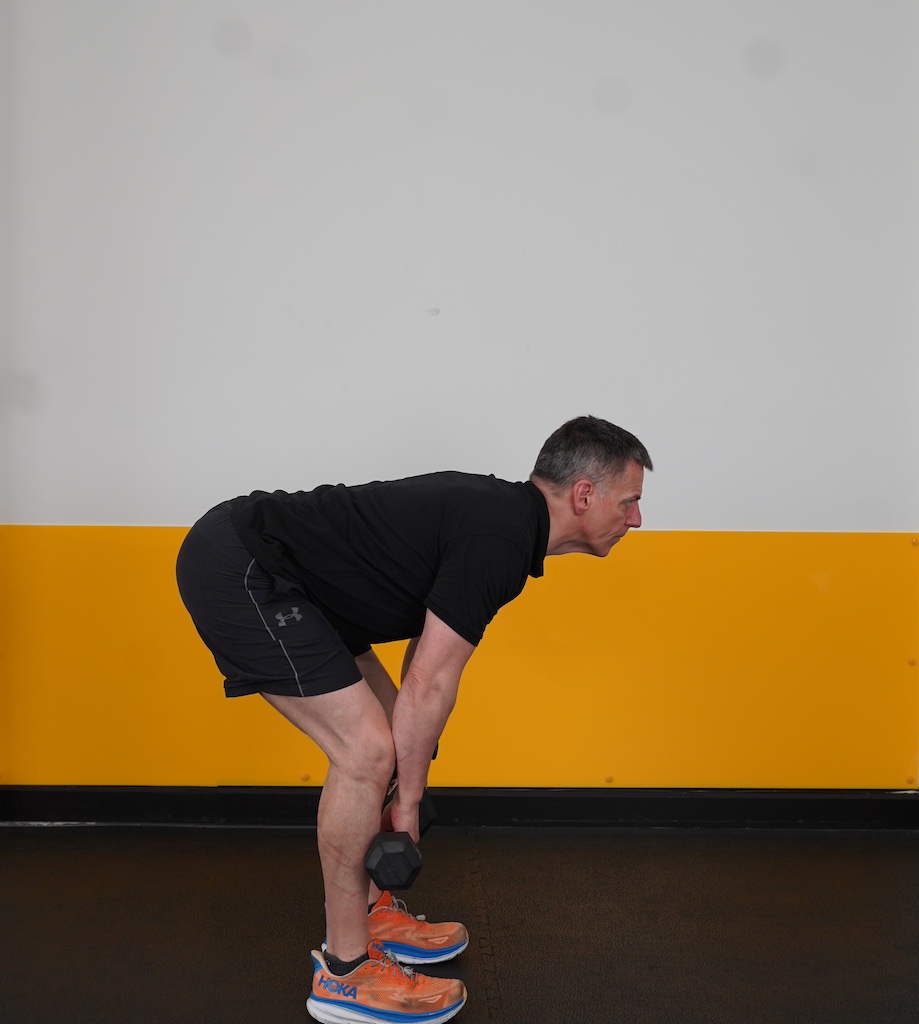
2. Deadlift with dumbbells
Muscles worked: glutes, hamstrings, lower back.
- Start with dumbbells resting in front of hips, with your knees just slightly bent.
- Roll shoulders back and down, and gently pull your bellybutton in.
- Pressing the weights against your legs, slowly hinge at the waist. Keep your chest up, your back straight, and your knees just slightly bent.
- When you’re full hinged at the waist (i.e. your chest is parallel with the floor), pause for a count of one, then explosively return to the starting position.
- Pause at the top, reset your position, and perform another repetition.
3. Push-up
Muscles worked: pectorals (chest), triceps (upper back of your arms), shoulders
This movement can be performed on your knees or toes, depending on your strength.
- Take the starting position on your knees or toes. Your hands should be beside your chest, and your elbows should be pointing down toward your toes.
- Pull your bellybutton in, and slowly lower your chest between your hands. Stop approximately one inch from the ground.
- Hold for a count of one, then explosively return to the starting position.
4. Overhead press with dumbbells
Muscles worked: shoulders
- Start with dumbbells resting on your shoulders, palms facing inward.
- Pull your shoulders back and down, and tuck your chin in.
- Inhale deeply, then exhale as you push the weights up and back over the crown of your head (slightly backward).
- Twist at the top of the movement, touch the ends of the dumbbells above your head, and slowly lower the weights to the starting position, inhaling as the weights move downward.
5. Plank
Muscles worked: core (belly, glutes and hips)
- Start lying face down, with your elbows under your ribs, and your forearms on the floor.
- Lift your body so you’re contacting the floor with your elbows and toes only. Pull your bellybutton in slightly and squeeze your bum to secure your low back. Make sure you back stays flat throughout the motion.
- Hold this position for 30 seconds, rest for 15 seconds, then repeat two more times. As the time becomes easier, increase the duration by 15 seconds, with the same rest period in-between.
James Staring is the founder and lead fitness coach at Fit to Last Personal Trainers, which offers a high-end, all-inclusive fitness solution for those who’ve tried everything in the past, with little to no success or results. Fit to Last works in partnership with you to create a personalised programme of exercise, nutrition (no calorie counting or weighing) and small, simple lifestyle changes, to keep you on track to your goals, injury-free and bursting with energy.
Related content

